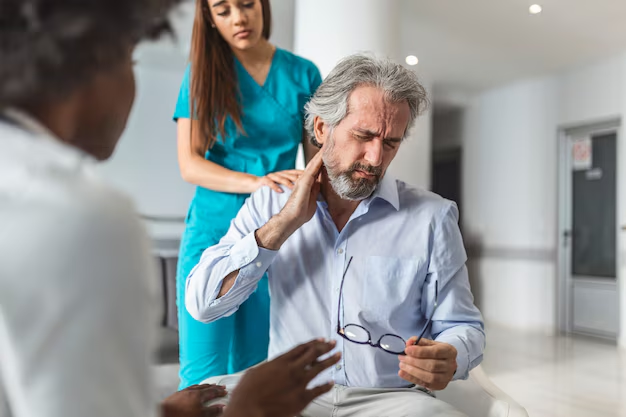Navigating Parkinson’s Disease: A Comprehensive Guide to Treatment Options
Living with Parkinson's disease can feel overwhelming, but understanding the available treatments can empower you to manage the condition effectively. Parkinson's disease is a progressive nervous system disorder affecting movement, causing symptoms such as tremors, stiffness, and difficulty with balance and coordination. While there's no cure yet, various treatment strategies can significantly improve quality of life. Let’s explore these options from different angles, ensuring you leave with a broad understanding of what’s available.
Understanding Parkinson’s Disease: The Basics
Before diving into treatments, it's essential to grasp what Parkinson's disease entails. Affecting millions worldwide, it's primarily characterized by the degeneration of dopamine-producing neurons in the brain. Reduced dopamine levels lead to the movement-related symptoms commonly associated with the disease.
However, Parkinson's disease also impacts non-motor functions, leading to symptoms like sleep disturbances, cognitive challenges, and mood disorders. Recognizing these facets is crucial in addressing the full spectrum of the disease’s impact.
Medical Treatments: Medications and More
Medications
Levodopa and Carbidopa: The Gold Standard
- Levodopa, often combined with Carbidopa, is the primary treatment. Levodopa transforms into dopamine in the brain, alleviating symptoms. Carbidopa prevents nausea and improves efficacy.
Dopamine Agonists
- These mimic dopamine effects in the brain and include medications like pramipexole and ropinirole. They’re less potent than Levodopa but can delay its need and reduce its use-related complications.
MAO-B Inhibitors
- Enzymes like MAO-B break down dopamine, so inhibitors (e.g., selegiline, rasagiline) increase dopamine levels, aiding symptom control.
COMT Inhibitors
- These prolong Levodopa’s effect by blocking its breakdown (e.g., entacapone).
Anticholinergics
- Useful for tremors, these help balance neurotransmitters but might have cognitive side effects.
Amantadine
- Initially an antiviral, it helps manage symptoms and may aid in reducing Levodopa-induced dyskinesias.
Surgical Options
Deep Brain Stimulation (DBS)
- This involves implanting a device to send electrical impulses to specific brain areas. It’s most effective for patients with advanced Parkinson’s and can provide relief when medications no longer suffice.
Pallidotomy and Thalamotomy
- These are less common surgical options aimed at destroying targeted brain tissue to reduce symptoms like tremors and rigidity.
Non-Medical Approaches: Beyond Pills and Surgery
Lifestyle Changes
Exercise and Physical Therapy
- Regular physical activity improves balance, flexibility, and overall mobility. Engaging in physiotherapy can specially tailor exercises to individual needs, enhancing movement and prolonging independence.
Diet and Nutrition
- A balanced diet rich in antioxidants (fruits, vegetables) may support brain health. Omega-3 fatty acids and B-vitamins also prove beneficial in maintaining neurological function.
Psychological and Social Support
Mental Health Care
- Cognitive behavioral therapy and other mental health interventions help manage depression and anxiety, common in Parkinson’s patients.
Support Groups
- Sharing experiences with peers can provide emotional support and practical advice on managing daily challenges.
Occupational Therapy
- Helps individuals adapt their home environment for safer mobility and maintain daily living activities.
Innovative Therapies and Research
Gene Therapy and Stem Cell Research
- Ongoing research aims to repair or regenerate affected brain areas. While still experimental, these therapies hold potential for future breakthroughs.
Alternative Therapy Considerations
- Practices like yoga, Tai Chi, and mindfulness can help enhance balance and reduce stress, complementing traditional therapies.
The Caregiver's Role: Supporting Your Loved One
Living with Parkinson’s impacts not just the individual but also their family and caregivers. Providing care involves understanding the disease, helping manage medications, attending medical appointments, and offering emotional support.
- Education and Communication: Learning about Parkinson’s and maintaining open communication with healthcare providers ensures a cohesive management approach.
- Respite Care: Ensuring caregivers have breaks to recharge is crucial to prevent burnout and sustain long-term support.
Embracing a Holistic Approach: A Balanced Perspective
While medical treatments remain central in managing Parkinson’s, a holistic approach considers the disease’s multifaceted nature. Balancing lifestyle adjustments, emotional well-being, and innovative therapies provides the best chance for enhanced quality of life.
Key Takeaway: The journey with Parkinson’s is unique for everyone. By weaving together medical, therapeutic, and supportive treatments tailored to individual needs, managing Parkinson’s becomes a shared, empowered experience.
Summary: Your Parkinson’s Treatment Toolkit 🛠️
- Medications: Levodopa, dopamine agonists, MAO-B inhibitors for symptom control.
- Surgery: Consider DBS for advanced cases.
- Lifestyle: Exercise, balanced diet, mental health care.
- Support: Engage in support groups, therapy; adapt environments with occupational help.
- Innovation: Stay informed on gene therapy and alternative practices.
- Caregiving: Educate, communicate, and ensure caregiver well-being.
This guide underscores the importance of understanding available options and personalizing them to fit individual preferences and needs. By staying informed and proactive, managing Parkinson’s becomes a journey of collaboration towards improved living standards. 🌟

Related Articles
- Are There Environmental Causes Of Parkinsons
- Can Alcohol Cause Parkinson's
- Can Concussions Cause Parkinson's
- Can Females Get Parkinson Disease
- Can Head Trauma Cause Parkinson's
- Can Parkinson Disease Cause Dizziness
- Can Parkinson's Affect Eyesight
- Can Parkinson's Affect Memory
- Can Parkinson's Affect Speech
- Can Parkinson's Affect Vision